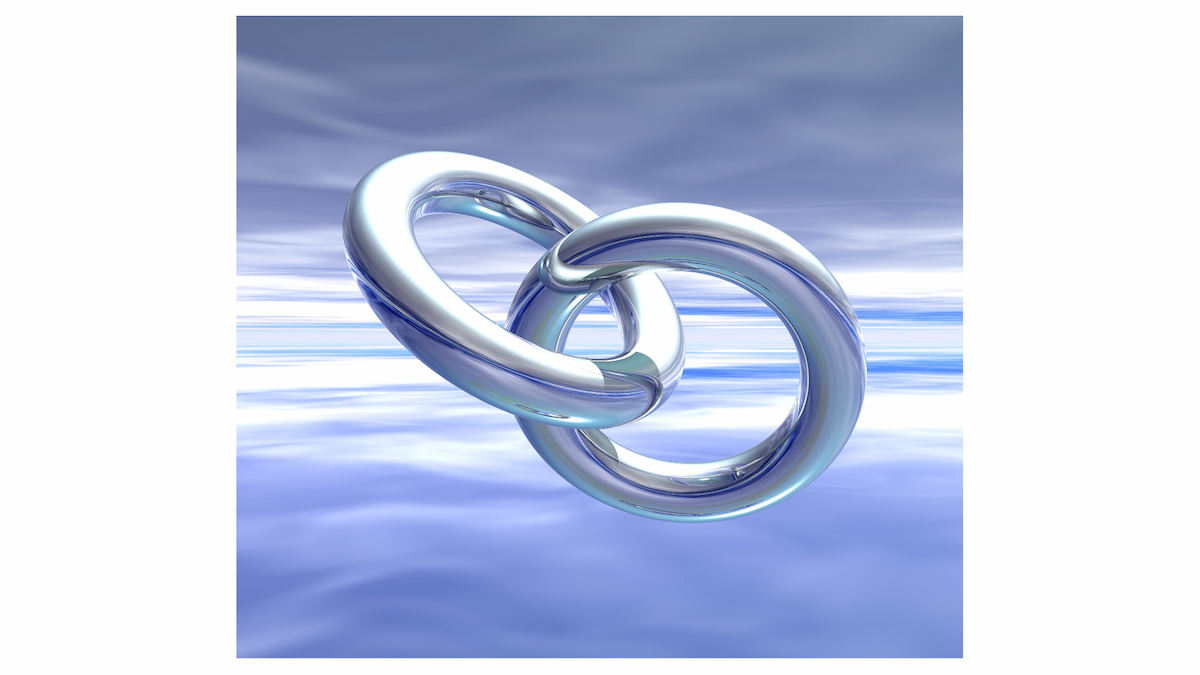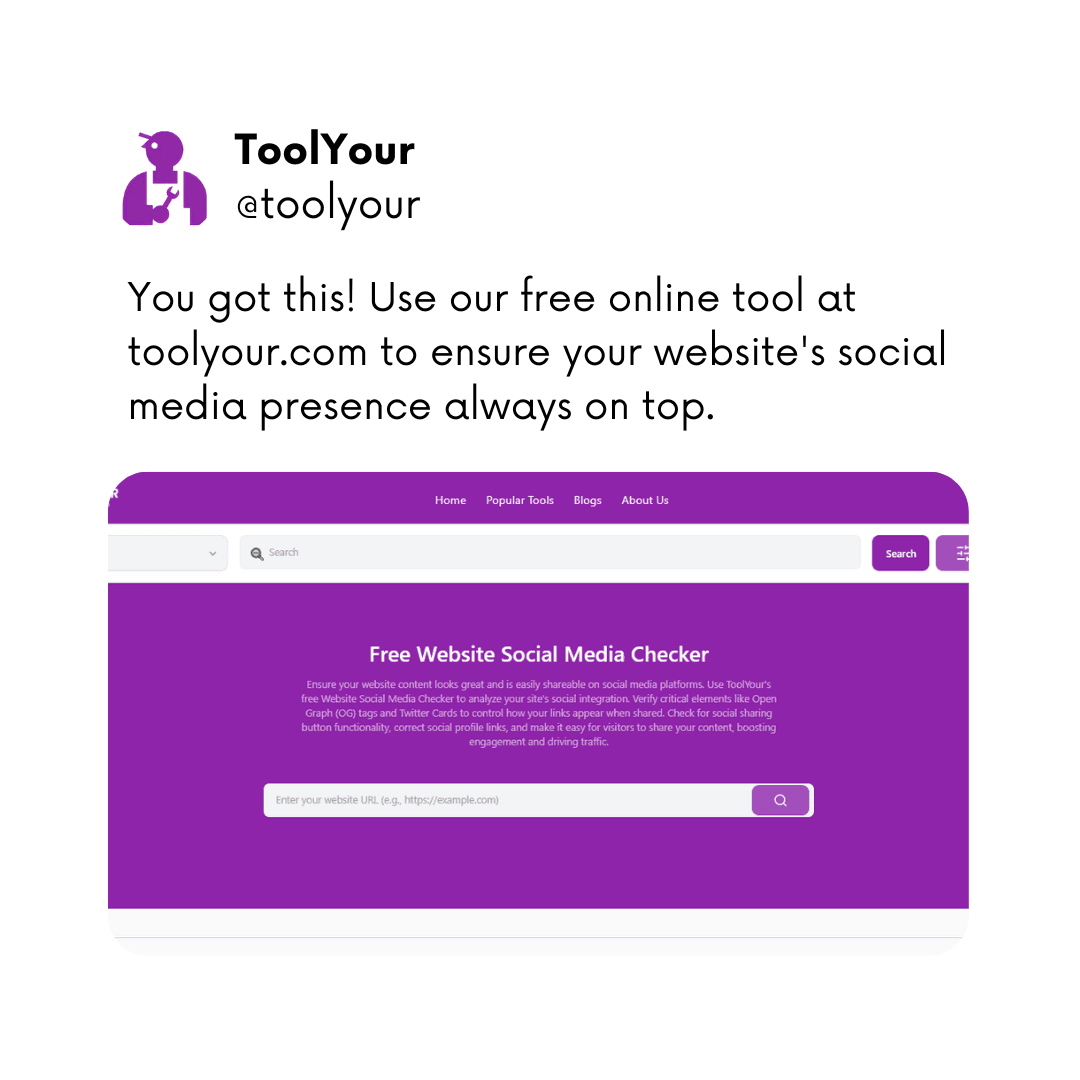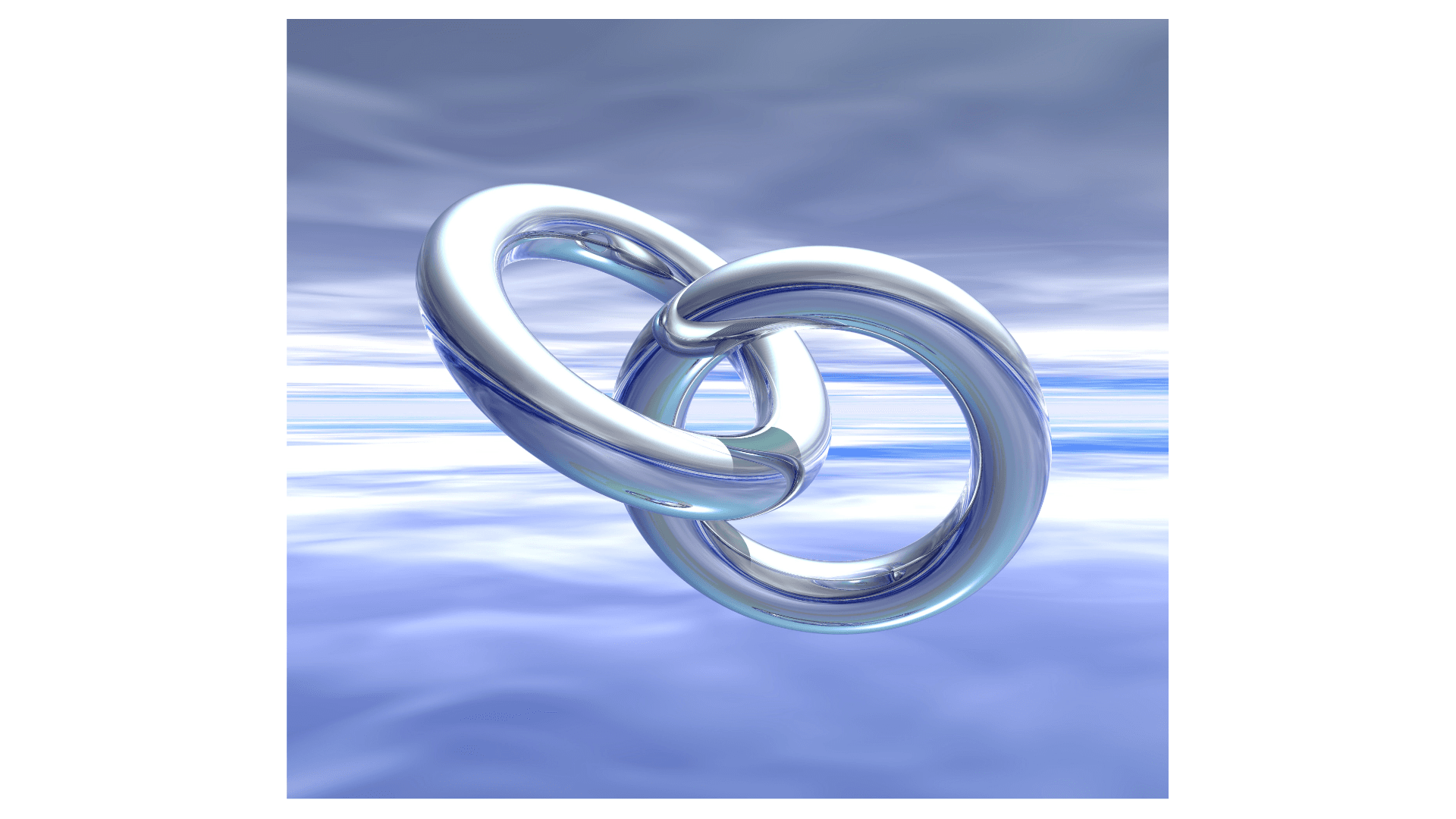Imagine a grand library, filled with countless books. Now, imagine if those books were just thrown onto shelves without any order, no signs, no one to tell you where to find what you need. It would be a messy, confusing place, right? Your website is a bit like that library, and the "roads" or connections between your web pages are called internal links. These links are super important for helping both people and search engines like Google, Bing, and Yandex find their way around your website.
But just like roads can have potholes or detours, internal links can sometimes go wrong. They might lead to a page that doesn't exist anymore, or they might not connect your most important information properly. This is where a Free Internal Link Checker Tool becomes your trusty guide, ensuring your website's pathways are smooth, clear, and lead to all the right places.
In this very long story, we will travel back in time to understand why these tools became so important. We'll learn how people managed before them, who thought of them, and how they changed the game for websites everywhere. Then, we will open the door to a fantastic new tool, our very own Free Internal Link Checker Tool at ToolYour.com, and show you how it can make your website shine?
Chapter 1: The Early Days of the World Wide Web – A Maze Without a Map
Think back to the very beginning of the internet, when websites were like small, quiet villages. There weren't millions of pages, and finding information was often a manual adventure. People would build simple websites, maybe just a few pages, and they would link them together with internal links. These links were put there by hand, like drawing a simple map for a small village.
What was the need for internal links?
Even in those early days, internal links were important for two main reasons:
For People (Users):
Imagine you are reading about "cats" on a website, and the website also has a page about "dogs." An internal link would be like a small note saying, "Hey, if you like cats, you might also like to read about dogs? Click here." It helped people move from one related topic to another, making it easier to explore the website.
For Search Engines (The "Spiders" of the Web):
Even in the early days, search engines (though much simpler than today's Google) were trying to understand what websites were about. They had little "spiders" or "bots" that would crawl, or read, the web pages. When these spiders found a link, they would follow it to discover more pages. Internal links helped these spiders find all the pages on a website, so they could add them to their big list of websites (called an "index"). If a page didn't have any links pointing to it, the spiders might never find it, and it would be like a hidden room in the library – no one would know it existed?
How did people check internal links back then?
This is where it gets interesting? Before smart tools were invented, checking internal links was a lot like being a detective with only your eyes and a notebook.
Manual Clicking:
The most basic way was to simply click on every single link on every single page of your website. If a link led to a page that didn't load (a "broken link"), you'd make a note. This was okay for tiny websites with only a few pages, but imagine doing this for a website with hundreds or thousands of pages? It would take forever, and you'd miss many things.
Looking at the "Source Code":
Every web page has a hidden language called "HTML" (HyperText Markup Language). This is like the blueprint of the page. People who knew this language could open the source code and look for all the
<a>tags (which is the special code for a link). They would then manually check if the link address inside the
<a>tag was correct. This was very technical and still incredibly slow.
Spreadsheets and Lists:
Some very organized (and patient?) webmasters would create big spreadsheets. They would list every page on their website and then manually note down all the links coming from and going to that page. This was a way to try and map out their website, but again, it was a huge amount of work and very easy to make mistakes.
Simple "Site:" Searches in Search Engines:
People would sometimes use a trick in search engines. They would type
site:yourwebsite.comto see all the pages Google or another search engine knew about on their website. If a page was missing from this list, it might mean it wasn't linked properly. But this was more for finding missing pages than checking link health.
As websites grew bigger and more complex, these manual ways became a huge headache. Broken links became a big problem, not just for people trying to use the website, but also for search engines.
Chapter 2: The Rising Need – Why Broken Links are Bad News
As the internet grew, so did the problems with internal links. Imagine our library again, but now many of the "roads" lead to dead ends? This is what broken links are. A broken internal link happens when a link points to a page that has been moved, deleted, or simply doesn't exist anymore.
Why are broken links a big deal?
Bad for People (Users):
When a person clicks a link and it leads to a "Page Not Found" error (often called a "404 error"), it's very frustrating. They might get annoyed and leave your website, maybe never coming back. This is like a shop with many "closed" signs – people will just go to another shop.
Bad for Search Engines (SEO – Search Engine Optimization): Search engines want to show people the best and most useful websites. If their "spiders" keep finding broken links on your site, it tells them that your website might not be well-maintained or offer a good experience.
Wasted "Crawl Budget":
Think of search engine spiders as having a limited amount of time and energy to explore your website. If they spend that energy trying to follow broken links, they are wasting their time and might miss finding your important, good pages.
Less "Link Juice":
In the world of SEO, we talk about "link juice" or "link equity." This is like a small amount of "power" that passes from one page to another through links. When a link is broken, that "link juice" gets spilled and doesn't reach the page it was supposed to. This can make the linked page weaker in the eyes of search engines.
Poor Site Structure:
Broken links can mess up how search engines understand the connections and importance of different pages on your website. They might not see your most important content as important if the links to it are broken or missing.
Orphaned Pages:
If a page has no internal links pointing to it, it becomes an "orphan page." Search engine spiders might never find these pages, which means they won't show up in search results, no matter how good their content is.
The need for a better way to check internal links became very clear. Webmasters (the people who manage websites) needed a tool that could quickly and easily find these problems, so they could fix them.
Chapter 3: The Birth of the Internal Link Checker Tool – A Beacon in the Maze
While it's hard to point to one single person or moment and say, "This is when the internal link checker tool was invented?", the idea likely grew gradually from the frustrations of manual checking. As the internet grew, smart people (often in the field of SEO, which helps websites appear higher in search results) started writing small programs or scripts to automate the task of checking links.
The Evolution of the Tool:
Simple Scripts:
The very first "tools" were probably simple computer programs written by individuals. These programs would take a list of web pages and try to visit each link on those pages, reporting back any that didn't work. They were basic but a huge improvement over manual clicking.
Desktop Software:
Over time, more advanced desktop programs were created. Tools like
Screaming Frog SEO Spider
became very popular. You could download them to your computer, tell them your website's address, and they would crawl your entire site, just like a search engine spider. They would then give you detailed reports of all your internal links, including any broken ones. This was a game-changer?
Online Tools and Platforms:
As the internet became even more powerful, these tools started moving online. Now, you didn't need to download anything. You could just go to a website, put in your website's address, and the tool would do the work for you in the cloud (on powerful computers far away). Big SEO companies like Ahrefs and SEMrush also built powerful internal link analysis features into their larger toolkits.
The Benefits People Gained from These Tools:
The invention and improvement of internal link checker tools brought immense benefits:
Time-Saving Hero:
What used to take days or even weeks of manual work could now be done in minutes or hours, even for very large websites. This freed up webmasters to focus on other important tasks.
Accuracy and Completeness:
Automated tools don't get tired or make human errors. They can check every single link on every page, ensuring no broken links go unnoticed.
Improved User Experience:
By quickly finding and fixing broken links, websites became much smoother and more enjoyable for visitors. Less frustration means happier users who stay longer and come back more often.
Better SEO Performance: This was a massive win?
Enhanced Crawlability:
Search engine spiders could now crawl websites more efficiently, finding and indexing more pages without getting stuck on broken links.
Effective Link Equity Distribution:
Webmasters could ensure that "link juice" flowed correctly through their site, boosting the importance of key pages.
Clearer Site Structure:
Tools helped reveal how pages were connected, allowing webmasters to build a more logical and clear website structure that search engines could easily understand.
Discovery of Orphan Pages:
These tools made it easy to find pages that had no internal links, helping webmasters connect them to the rest of the site and make them discoverable by search engines.
Identifying Opportunities:
Beyond just finding broken links, these tools started showing webmasters where they
could
add new, helpful internal links to improve their site's connections and pass more authority.
The internal link checker tool became an essential item in the toolbox of anyone serious about managing a website well and helping it succeed in search engines.
Chapter 4: Your New Navigator – The ToolYour.com Free Internal Link Checker Tool
Now that we understand the incredible journey and importance of internal link checker tools, it's time to introduce a fantastic new helper for your website adventures: the Free Internal Link Checker Tool from ToolYour.com?
You can find this powerful tool right here: https://www.toolyour.com/digital-tools/internal-linking
We built this tool with you in mind – whether you're just starting with a small blog, managing a growing online shop, or simply want to make sure your website is as good as it can be. Our goal was to create something truly simple to use, yet powerful enough to give you all the important information you need about your website's internal links.
How Our Tool Makes Things Easy for You:
Let's break down how our Free Internal Link Checker Tool works, step by simple step:
Start Your Journey – Enter Your Website Address: When you land on the tool page, you will see a clear box where you can type or paste your website's address. This is the first and most important step. Important Tip: Please be careful here? You need to paste your link in this exact format:
https://toolyour.com. Do NOT paste it aswww.toolyour.comorhttps://www.toolyour.com. If you do, our server might get confused and give you an error. We want to help you, so follow this little rule?Let the Tool Do the Work – Click or Press Enter: Once you've carefully put in your website address, simply press the "Enter" key on your keyboard or click on the "search icon" (it looks like a little magnifying glass) right next to the input box. Our tool will then get to work, like a super-fast detective exploring all the pathways on your website.
See the Big Picture – Overview Cards: After a short time (it works very fast?), you will see the results appear. The first thing you'll notice are "overview cards." These cards are like quick summaries, showing you the most important numbers at a glance. You'll see:
Broken Links:
This card will tell you how many links on your website are leading to dead ends. This is crucial information, as these are the links you need to fix first?
Working Links:
This card shows you how many of your links are perfectly fine and leading to active pages. Good news?
Condition:
This card gives you a general idea of the health of your internal linking.
Deep Dive into Your Links – The Three Tabs: Below the overview cards, you'll find three easy-to-understand tabs:
Overview Tab: This is where you get a clear picture of your website's linking health.
Pie Chart:
You'll see a colorful pie chart that visually shows you the proportion of broken links versus working links. It’s a very easy way to see if you have many problems or just a few.
Internal Link Details:
This section provides more numbers about your internal links, including how many there are in total and a breakdown of their status.
SEO Optimization Check:
Our tool also gives you a simple answer: "Are these internal links optimal according to SEO?" This is a quick check to let you know if your current linking structure is helping your website rank better or if it needs some love.
Graphs for Health:
You'll find easy-to-read graphs that show the trends of your internal links, working links, and broken links over time (if you use the tool regularly). This helps you track your progress.
Health Assessment Progress Bar:
Imagine a health bar like in a video game? Our tool has one for your website's internal linking. It will show you visually how healthy your links are, giving you a quick understanding of your site's overall link condition.
Visualization Tab: This is a truly special part of our tool?
Visual Map:
Our tool tries to draw a simple picture of your internal links. It helps you see how different pages are connected. This visual map can help you spot pages that are not well-connected or areas where links are missing.
Suggestions for Improvement:
Right within the visualization, you'll find simple suggestions on how to make your links better. It's like having a friendly guide pointing out the best paths to take.
Suggestions Tab: This tab is packed with actionable advice.
Easy Fixes:
You'll get clear and simple suggestions on how to fix broken links and improve your overall linking structure.
SEO Boosters:
These suggestions are specifically designed to help your website do better in search engines. For example, it might tell you to link more to your important "money pages" (pages that help you sell things or get customers) or to connect related articles.
Improving User Experience:
The suggestions also focus on making your website easier and more enjoyable for your visitors. Remember, a happy user often means a happy search engine?
Why Our Tool is Perfect for You (Even if You're New to SEO):
We know that SEO can sound complicated, with many technical words. That's why we made our Free Internal Link Checker Tool super easy to understand.
Simple Words:
We use everyday English, like the kind you would understand if you were listening to a friend explain something. No fancy jargon? We aim for a "6-band English" level, meaning it's clear and straightforward, so even a kid could get the main ideas.
Clear Guidance:
From the moment you put in your website link to the suggestions you get, everything is designed to be very clear and easy to follow. You don't need to be an SEO expert to use it and get great results.
Focus on What Matters:
Our tool cuts through the noise and shows you what is most important for your internal links. We highlight broken links first because they are the most urgent to fix.
Free and Accessible:
The best part? It's completely free? You can use it as often as you like to keep your website healthy and happy.
Chapter 5: Building a Superhighway for Your Website – Why Internal Links Matter So Much Today
In today's fast-paced internet world, internal links are more important than ever. They are not just small roads; they are like the superhighways and main roads of your website, guiding everyone where they need to go. Search engines like Google, Bing, and Yandex are incredibly smart now. They don't just look for keywords; they try to understand the meaning behind your content and how different parts of your website relate to each other.
How internal links help your website win in search engines:
Showing Importance:
When many internal links point to a specific page on your website, search engines understand that this page is important. It's like many roads leading to the city center – it tells you that the city center is a key place? This helps those important pages rank higher.
Topic Clusters:
Imagine you write a lot about "healthy eating." You might have a main page called "Guide to Healthy Eating," and then many smaller pages like "Best Healthy Breakfasts," "Easy Healthy Dinners," and "Snacks for a Healthy Life." When you link all these smaller pages to your main "Guide to Healthy Eating" page, and link them to each other where it makes sense, you create a "topic cluster." This helps search engines see that you are an expert on "healthy eating" and makes it easier for them to show your content to people searching for that topic.
User Journey:
Good internal links create a natural path for your visitors. They can easily jump from a general topic to a more specific one, or from a problem to its solution. The longer people stay on your website and explore, the better. This tells search engines that your content is valuable and engaging.
New Content Discovery:
When you publish a brand new article, how do search engines find it? Often, it's by following an internal link from an older, well-known page. By linking your new content from existing, popular pages, you help search engines discover and index it faster, so it can start showing up in search results sooner.
Distributing "Authority":
Some pages on your website might be very popular and have many good links from other websites (these are called "external links"). These pages have a lot of "authority." By adding internal links from these strong pages to other, less strong pages on your site, you can share some of that authority. It's like giving a little boost to your newer or less popular pages.
The differences between Google, Bing, and Yandex (simplified):
While they all want to show the best content, they have slightly different ways of figuring out what's "best."
Google:
Google is like the super-smart student who understands everything deeply. It cares a lot about how useful your content is, if you are an expert, and if people trust your website (remember E-E-A-T: Experience, Expertise, Authoritativeness, Trustworthiness). For internal links, Google loves a clear site structure that helps users and crawlers.
Bing:
Bing is a bit more straightforward. It still likes good content and clear links, but it pays a bit more attention to social media signals (how much your content is shared on Facebook, Twitter, etc.). It also sometimes looks more closely at exact keywords in links.
Yandex:
Yandex, which is popular in Russia, is very interested in how people actually
use
your website. Do they stay long? Do they click around? If people like your website and interact with it, Yandex will likely see it as important. Yandex also has its own "Site Quality Index" which is a score for your website's overall quality.
Our Free Internal Link Checker Tool at ToolYour.com helps you with all these things, no matter which search engine you're aiming for. By keeping your internal links healthy and strong, you're building a better website for everyone – users and search engines alike?
Conclusion: Your Website's Best Friend
From the early days of manual link checking to today's smart automated tools, the journey of the internal link checker has been one of continuous improvement, driven by the need to make websites better. What started as a small helper to catch broken links has grown into a powerful assistant that helps website owners build strong, user-friendly, and search-engine-friendly online homes.
The Free Internal Link Checker Tool at ToolYour.com is proud to be part of this evolution. We offer you a simple, yet mighty, tool to ensure your website's pathways are always clear, always working, and always leading to success. Use it regularly, understand the clear insights it provides, and follow its easy suggestions. By doing so, you're not just fixing links; you're building a better, stronger, and more visible presence on the internet.
So, go ahead? Visit https://www.toolyour.com/digital-tools/internal-linking now, put in your website's address (remember the https://toolyour.com format?), and let our tool help you make your website a brilliantly connected and highly favored destination in the vast online world. Happy linking!
Check now: https://www.toolyour.com/digital-tools/internal-linking










